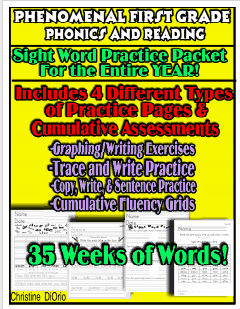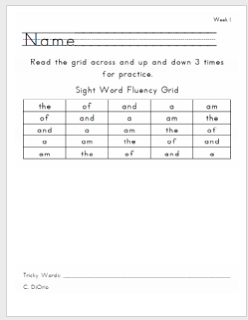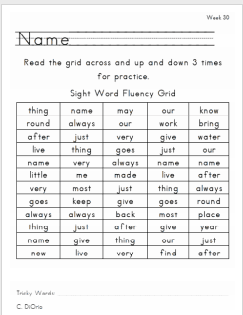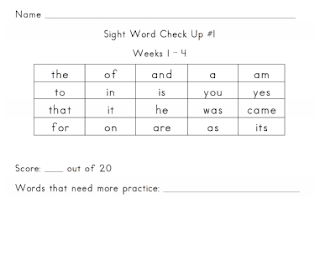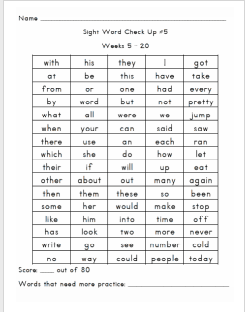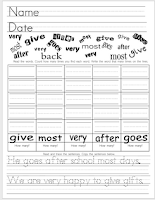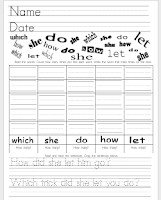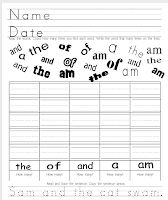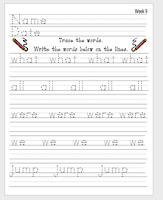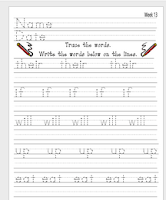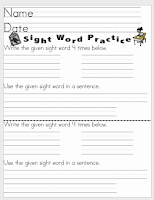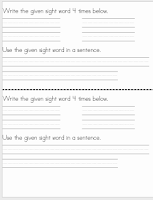We've Added New Components to Our Sight Word Pack!
We are now calling it A First Grade Sight Word Pack for the Entire Year! If you find sight word instruction difficult check out this pack. It will make your life so much easier!
In addition to the first three things in the original pack; Sight Word Graphing/Writing Exercises, Sight Word Trace and Write, and The Sight Word Blank Practice, we have added Examples 4 and 5 to our pack. You can get 130 pages of cumulative materials for $10.00. You can use this pack year after year. It starts with the First 150 Fry Words, but adds in the missing Dolch Words for a total of 175 words for the year. This way you get the best of both worlds; the newer more current Fry words plus the good old Dolch words that aren't included in the first 150 Fry Words. This gives you 4 - 5 days of practice for each week. There are 35 weeks of words; 5 new words per week.
There are also Sight Word Fluency Grids. They are cumulative in nature. There are 35 different versions; one for each week that correlates to all of the other pages. Each week the new words are added in more than one time. The grids start off small and grow as the students progress through the weeks. Each week new words are added in and some are taken out. They are continually practicing the words throughout the year. This way you know they keep the words as they go along. There is also a line at the bottom for the student/parent/teacher to keep track of words that are tricky for them. This will help to focus the student on words they need more help with.
Here are 3 examples of the Fluency Grids. The week is clearly marked in the upper left hand corner. These can be used with a partner, independently, for homework, or in a center/station. There is a place to keep track of tricky words also. The grids are cumulative and always keeps words from previous weeks on the grid. It is continual practice to help student retain and truly embed these words.
Example 5 – Cumulative Assessments
There are also nine different cumulative assessments. There are two different copies of each assessment; A teacher copy for note taking and a student copy of the words with less visual clutter. The assessments are set up by weeks in the same order as all of the other materials. They are clearly marked with what weeks are included in the test. Basically, there is an assessment every four weeks. The previous weeks stay on the grid to make sure students are really retaining the words. After the first four assessments, there are 15 weeks of words on each assessment. Ten of those weeks, students will have had a great deal of practice. The last four rows are the new words.
Here are 3 examples of the Sight Word Check up Assessments. They are all cumulative tests that occur every four weeks. Each Assessment adds 4 new weeks of words, while keeping the previous 11 weeks on the grid. It is a continual assessment. As new weeks are added, the very early on weeks are taken off. The words stay on the assessments for quite a while so that teachers can really identify which words students have embedded.

